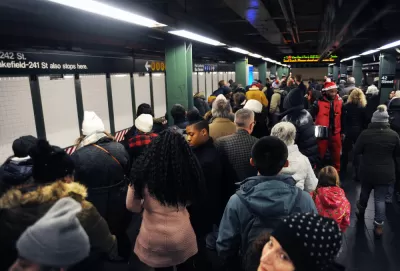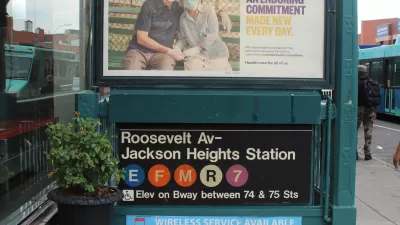As subway riders return in fits and starts, some stations are experiencing a much faster recovery than others.

New York City's subway riders are coming back, but the return has been uneven across the city's boroughs. Michael Gold, Ana Ley and James Thomas explore the differences in ridership patterns in Manhattan, Brooklyn, and Queens.
Stations in lower-income areas in Brooklyn, Queens and Upper Manhattan, where residents are less likely to be able to work from home and typically depend more on public transit, have rebounded far faster than stations in office-heavy sections of Manhattan, including some that were once the busiest in the system, where many workers are still able to work remotely.
The system's low ridership numbers put it in the same difficult position as transit agencies around the country that are struggling to continue serving transit-dependent riders while dealing with labor shortages and slashed revenues.
The article details the experiences of riders at three different stations. The daily commute never stopped for many essential workers at the Junction Boulevard station in Queens, where ridership was back to 74.2 percent of pre-pandemic levels by November 2021. Meanwhile, ridership at Manhattan's Wall Street station, one of the system's lowest, remains at a dismal 37.5 percent of 2019 levels. The article notes that the drop in commuters has deeply affected the small businesses that depended on white-collar workers, while some riders avoid the eerily empty subway because of safety concerns, an issue the city is trying to mitigate with more visible patrols and PR campaigns.
FULL STORY: Here’s Where Subway Riders Have Returned. And Where They Haven’t.

Maui's Vacation Rental Debate Turns Ugly
Verbal attacks, misinformation campaigns and fistfights plague a high-stakes debate to convert thousands of vacation rentals into long-term housing.

Planetizen Federal Action Tracker
A weekly monitor of how Trump’s orders and actions are impacting planners and planning in America.

Chicago’s Ghost Rails
Just beneath the surface of the modern city lie the remnants of its expansive early 20th-century streetcar system.

Bend, Oregon Zoning Reforms Prioritize Small-Scale Housing
The city altered its zoning code to allow multi-family housing and eliminated parking mandates citywide.

Amtrak Cutting Jobs, Funding to High-Speed Rail
The agency plans to cut 10 percent of its workforce and has confirmed it will not fund new high-speed rail projects.

LA Denies Basic Services to Unhoused Residents
The city has repeatedly failed to respond to requests for trash pickup at encampment sites, and eliminated a program that provided mobile showers and toilets.
Urban Design for Planners 1: Software Tools
This six-course series explores essential urban design concepts using open source software and equips planners with the tools they need to participate fully in the urban design process.
Planning for Universal Design
Learn the tools for implementing Universal Design in planning regulations.
planning NEXT
Appalachian Highlands Housing Partners
Mpact (founded as Rail~Volution)
City of Camden Redevelopment Agency
City of Astoria
City of Portland
City of Laramie




























